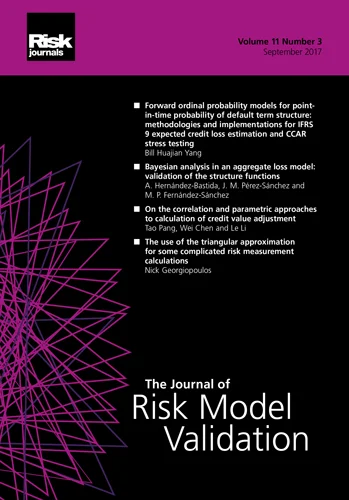Journal of Risk Model Validation
ISSN:
1753-9579 (print)
1753-9587 (online)
Editor-in-chief: Steve Satchell

Need to know
- This paper informs about risk data validation solutions under BCBS 239: Principles for effective risk data aggregation and risk reporting.
- This paper focuses on proving data lineage under BCBS 239 that goes beyond the ability to validate risk data at any point.
- This paper advises on what is needed to become compliant with BCBS 239 in the area of risk data validation.
- This paper provides guidance for master data management, data lineage, metadata management and end user implementations that serve the purpose of validating risk data.
- The paper provides practical advice for internal model validation teams facing the Targeted Review of Internal Models (TRIM) that puts emphasis of the data validation components.
Abstract
With banks facing increased pressure from regulators to improve their risk data aggregation processes, BCBS 239 constitutes a particular point of focus. At this point, BCBS 239 – the Basel Committee on Banking Supervision’s “Principles for effective risk data aggregation and risk reporting” – should not be treated as a set of regulations for data aggregation, but as a collection of ongoing practices for achieving the best risk management experience. Recognizing the importance of BCBS 239, this paper specifically explores the key weaknesses around existing data aggregation capabilities that affect the validation function. As it transpires, proving complete data lineage under BCBS 239 is challenging for banks. Therefore, this paper advises on solutions, tools and techniques to improve the audit trail of risk data and the overall understanding of the risk data universe. This paper, based on a survey of twenty-nine global banks, looks into how risk data is provided and validated.
Copyright Infopro Digital Limited. All rights reserved.
As outlined in our terms and conditions, https://www.infopro-digital.com/terms-and-conditions/subscriptions/ (point 2.4), printing is limited to a single copy.
If you would like to purchase additional rights please email info@risk.net
Copyright Infopro Digital Limited. All rights reserved.
You may share this content using our article tools. As outlined in our terms and conditions, https://www.infopro-digital.com/terms-and-conditions/subscriptions/ (clause 2.4), an Authorised User may only make one copy of the materials for their own personal use. You must also comply with the restrictions in clause 2.5.
If you would like to purchase additional rights please email info@risk.net








